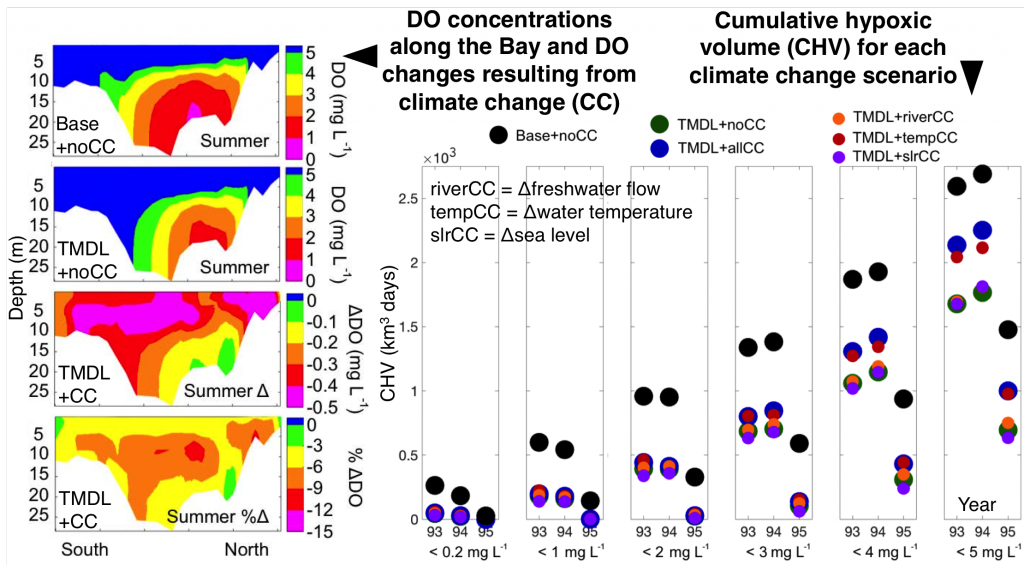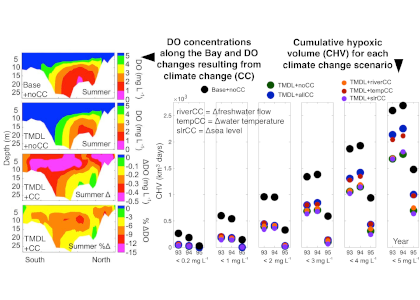The Chesapeake Bay is a 200-mile-long estuary with both economic and ecological importance to the mid-Atlantic region. Runoff, pollution, and algae blooms resulting in hypoxia have been major issues over the past 50 years, and much work has been done to improve the water quality and health of the Bay. Dissolved oxygen concentrations will be altered in response to climate change, but whether this will counteract the benefits of reduced nutrient loading is an important scientific and management question. Specifically, what are the impacts of climate change on future Chesapeake Bay hypoxia and on progress towards meeting water quality standards associated with the Chesapeake Bay Total Maximum Daily Load (TMDL)?

(Left) Latitudinal along-bay dissolved oxygen (DO) transects for the Base scenario (Base+noCC) and TMDL scenario (TMDL+noCC) without climate change; transects for the absolute and percent changes in DO due to climate change (TMDL+CC). (Right) Cumulative hypoxic volume for six ranges of DO concentrations for each of the study years and each of the scenarios (colored circles).
A recent study in Biogeosciences quantified the competing impacts of climate change and nutrient reductions on Chesapeake Bay hypoxia. The authors used a 3-D modeling system along with projected mid-21st century changes in temperature, freshwater flow, and sea level, assuming fully achieved goals of TMDL nutrient reductions. Of these three climate change factors, increased temperature most strongly impacts future hypoxia, primarily due to decreased solubility year-round and increased respiration and remineralization in the spring. Sea level rise is expected to exhibit a small positive impact resulting from increased estuarine circulation and reduced residence time. Increased river flow is anticipated to exert a small negative impact due to increased nutrient loading.
These results demonstrate that climate change may limit the effectiveness of future management actions aimed at reducing nutrient inputs to the Chesapeake Bay. However, the positive impacts of mandated nutrient reductions still outweigh the negative impacts of climate change. Given that climate impacts are expected to intensify with time and large uncertainties remain among different climate projections, it is critical to continue examining how the Bay may evolve in the future by assessing the sensitivity of oxygen concentrations to different climate change scenarios.
Authors:
Isaac D. Irby (VIMS, William & Mary)
Marjorie A. M. Friedrichs (VIMS, William & Mary)
Fei Da (VIMS, William & Mary)
Kyle E. Hinson (VIMS, William & Mary)




